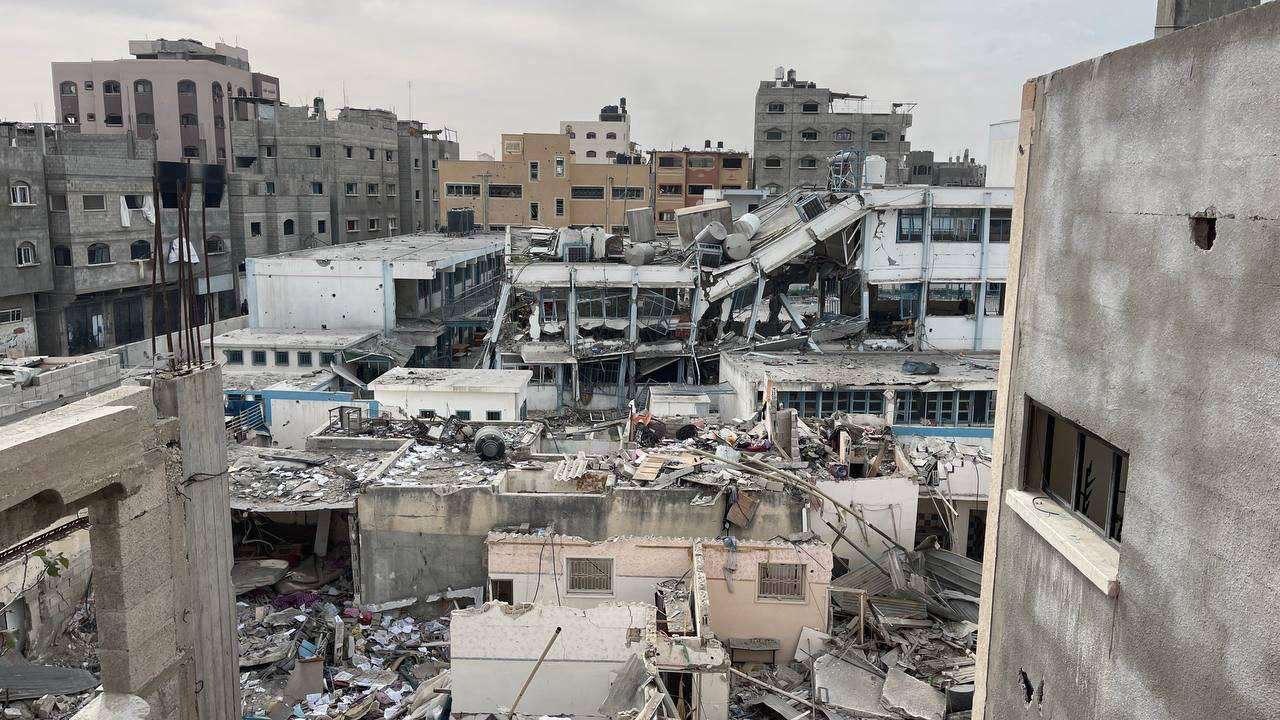Gaza City has become the center of intense Israeli airstrikes, with the military claiming its targets are militant positions and supporting infrastructure. The escalation places civilians in extreme danger as the bombing hits residential neighborhoods and public facilities.
The Israeli military says the operation aims to weaken the coordination of armed groups inside the city. As part of its military pressure, the Defense Minister issued a final warning, declaring that civilians who remain will be treated as terrorist supporters.
Final Warning from Israel’s Defense Minister
The official warning stated that civilians were given one last opportunity to evacuate south. After the deadline, those who remained in Gaza City would be considered supporters of militants and risk becoming targets of military operations.
The claim sparked widespread criticism because it blurred the line between combatants and noncombatants. Many civilians now face an impossible choice: stay and risk being attacked, or flee with no guarantee of safety while losing homes and property.
Content of the Warning and Official Statement
The statement emphasized several key points. First, civilians were ordered to move south as a way to separate them from militants. Second, once the evacuation period ends, there will be no tolerance for those who remain. Third, military operations will focus strikes on areas not yet cleared, assumed to harbor militants.
The declaration was framed as a step to separate civilians from fighters but also raised serious legal and ethical questions about the treatment of civilians in a war zone.
H3: Criticism of War Laws and International Response
The warning that civilians could be classified as terrorists drew condemnation from humanitarian groups and international law experts. Critics argued that labeling entire populations as militants violates the principle of distinction under humanitarian law, which protects noncombatants.
Humanitarian organizations and independent observers called for safe evacuation routes and demanded guarantees for genuine humanitarian corridors. Diplomatically, several countries expressed concern about the growing toll on civilians.
Impact of Airstrikes in Gaza City and Surrounding Areas
Each wave of Israeli airstrikes has had devastating effects on social structures and basic services in Gaza City. Hospitals, schools, and public facilities suffered heavy damage, drastically limiting emergency response capacity.
Casualties and Destruction
The bombardment has caused civilian deaths and injuries, as well as the destruction of homes and infrastructure. Some facilities, once used as shelters, were struck, increasing the toll among those seeking refuge.
The devastation of infrastructure and residential areas triggered mass displacement, straining already limited resources in relatively safer zones.
Collapse of Health Services
Major hospitals are under immense pressure from a surge of patients and dwindling supplies of medicine and equipment. Some facilities were forced to reduce operations or evacuate departments due to safety threats.
This collapse worsened preventable deaths that could have been avoided under normal medical operations.
Humanitarian Crisis and Evacuation Barriers
Mass displacement has been obstructed by damaged evacuation routes, fuel shortages, lack of vehicles, and the threat of strikes along evacuation corridors. Many residents remain because they lack safe alternatives or do not trust the evacuation process to protect them.
Shortages of water, food, and electricity worsen the crisis, leaving tens of thousands without basic survival needs.
Projections of the War and Israel’s Strategy
The escalation of airstrikes is part of a broader strategy to reduce the capabilities of armed groups in Gaza City. It is seen as preparation for further operations, potentially including ground maneuvers.
Separating Militants from Civilians
Israel’s military strategy emphasizes physically separating armed groups from civilians. Evacuation warnings are framed as a method to identify militant concentrations. However, the implementation in practice creates complications, especially without credible verification and protection mechanisms for evacuees.
The attempt to force separation risks exposing civilians to further harm while making it nearly impossible to distinguish fighters from ordinary residents.
Corridor Control and Access Restrictions
Restructuring control over access routes and closing certain roads reduced evacuation options for civilians. While this narrows militant mobility, it also increases risks for civilians trapped in contested zones.
Restrictions on access also block humanitarian aid delivery, worsening shortages of essential goods.
Implications for Negotiations and Political Pressure
Intensifying military pressure could impact ongoing political negotiations. Moves on the ground may serve as leverage in ceasefire talks or the implementation of security and political terms.
However, the wide humanitarian toll creates growing international pressure for diplomatic solutions and raises calls to prioritize civilian protection.
Civilians in Gaza City now face a devastating choice: remain in their homes and risk being targeted as “terrorist supporters,” or leave with no safety guarantees and the certainty of losing their livelihoods. The situation underscores the urgent humanitarian and legal questions about how civilian protection can be upheld during such intense military campaigns.
For further updates on the Gaza crisis and broader Middle East developments, follow related articles on Olam News.









